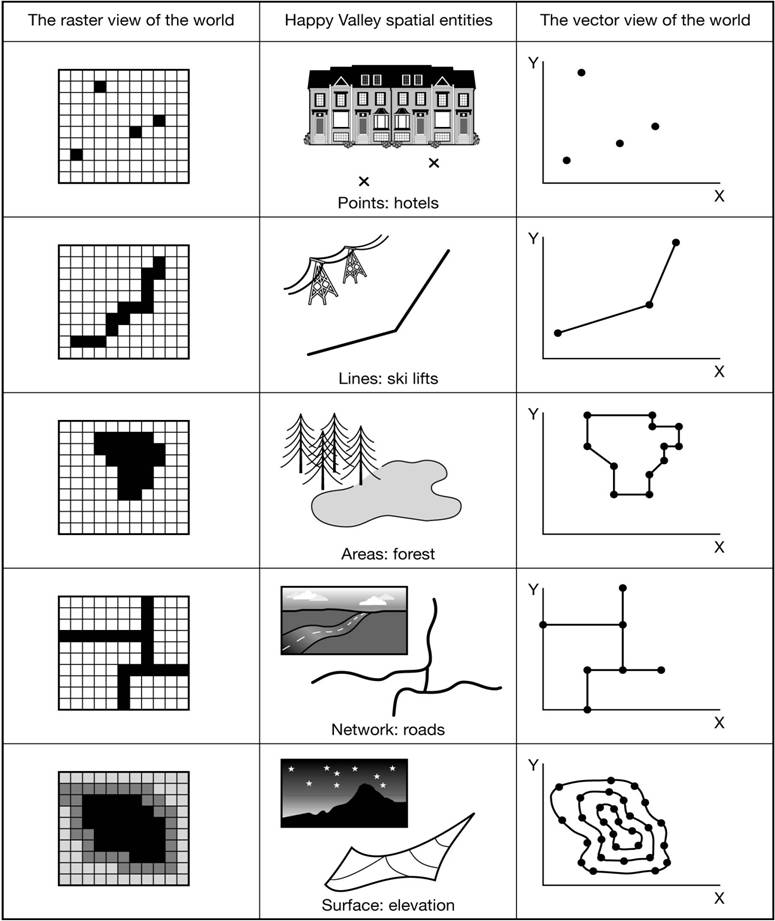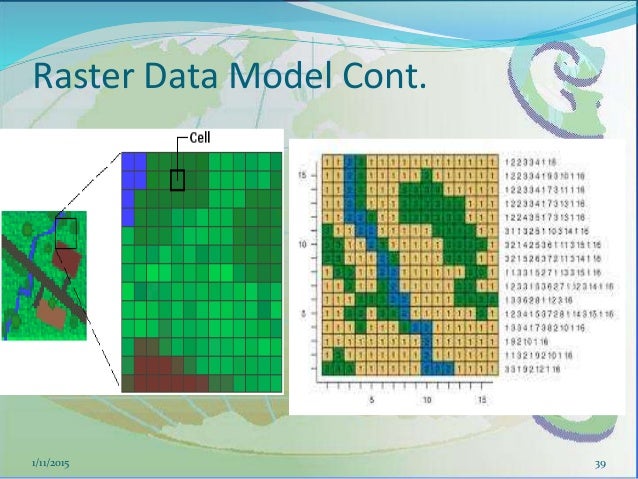

In the spaghetti model, the shared boundary of two neighboring polygons is defined as two separate, identical lines. For example, consider two adjacent polygons. Topology is a set of rules that model the relationships between neighboring points, lines, and polygons and determines how they share geometry. In contrast to the spaghetti data model, the topological data model is characterized by the inclusion of topological information within the dataset. Nevertheless, the simple structure of the spaghetti data model allows for efficient reproduction of maps and graphics as this topological information is unnecessary for plotting and printing. The computational requirements, therefore, are very steep if any advanced analytical techniques are employed on vector files structured this way. This results in a lack of topological information, which is problematic if the user attempts to make measurements or analyses. This creates some redundancies within the data model and therefore reduces efficiency.ĭespite the location designations associated with each line, or strand of spaghetti, spatial relationships are not explicitly encoded within the spaghetti model instead, they are implied by their location. In other words, each polygon must be uniquely defined by its own set of X, Y coordinate pairs, even if the adjacent polygons share the same boundary information.

It is notable that in this model, any polygons that lie adjacent to each other must be made up of their lines, or strands of spaghetti. One could envision each line in this model to be a single strand of spaghetti that is formed into complex shapes by the addition of more and more strands of spaghetti. In the spaghetti model, each point, line, and/or polygon feature is represented as a string of X, Y coordinate pairs (or as a single X, Y coordinate pair in the case of a vector image with a single point) with no inherent structure. The simplest vector data structure is called the spaghetti data model. We will examine two of the more common data structures here.

Vector data models can be structured in many different ways. Polygons have the properties of area and perimeter. Polygons are used to represent features such as city boundaries, geologic formations, lakes, soil associations, vegetation communities. In the case of polygons, the first coordinate pair (point) on the first line segment is the same as the last coordinate pair on the last line segment. Polygons are two-dimensional features created by multiple lines that loop back to create a “closed” feature. Lines that directly connect two nodes are sometimes referred to as chains, edges, segments, or arcs. Lines are used to represent linear features such as roads, streams, faults, boundaries. Lines are one-dimensional features composed of multiple, explicitly connected points. Points can be spatially linked to form more complex features. Vertices are defined as each bend along a line or polygon feature that is not the intersection of lines or polygons. Specifically, a point is a stand-alone feature, while a node is a topological junction representing a common X, Y coordinate pair between intersecting lines and/or polygons. Other types of point features include the node and the vertex. Points have only the property of location. Points are typically used to model singular, discrete features such as buildings, wells, power poles, sample locations. Points are zero-dimensional objects that contain only a single coordinate pair. Three fundamental vector types exist in geographic information systems (GIS): points, lines, and polygons. The spatial information and the attribute information for these models are linked via a simple identification number that is given to each feature on a map. The data attributes of these features are then stored in a separate database management system. Vector data models use points and their associated X, Y coordinate pairs to represent the vertices of spatial features, much as if they were being drawn on a map by hand. In this model, space is not quantized into discrete grid cells like the raster model. In contrast to the raster data model is the vector data model.


 0 kommentar(er)
0 kommentar(er)
